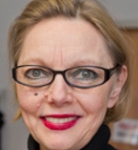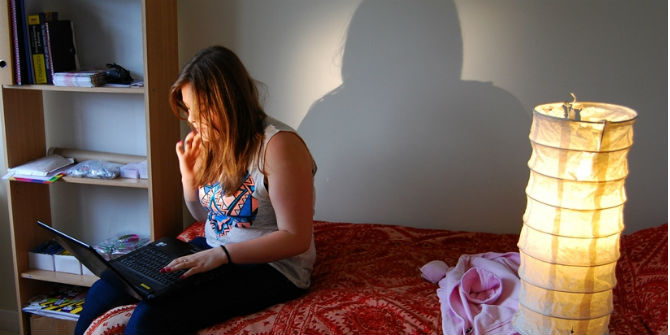 Children from poorer families often use media as a coping strategy to deal with the challenges of everyday life, while parents’ mediation strategies fail to take a child-centred approach, according to a new 12-year study. This post draws from Ingrid Paus-Hasebrink’s recently published co-authored book “Social Inequality, Childhood and the Media” which examined how socially disadvantaged families use media. Ingrid Paus-Hasebrink was full professor for Audio-visual and Online-Communication at the Department of Communications, University of Salzburg, and is still interested in young people’s (media) socialisation. She was Dean of the Faculty of Culture and Social Science and head of the Department of Communications at the university. [Header image credit: Fixers CC-BY-ND-2.0.jpg]
Children from poorer families often use media as a coping strategy to deal with the challenges of everyday life, while parents’ mediation strategies fail to take a child-centred approach, according to a new 12-year study. This post draws from Ingrid Paus-Hasebrink’s recently published co-authored book “Social Inequality, Childhood and the Media” which examined how socially disadvantaged families use media. Ingrid Paus-Hasebrink was full professor for Audio-visual and Online-Communication at the Department of Communications, University of Salzburg, and is still interested in young people’s (media) socialisation. She was Dean of the Faculty of Culture and Social Science and head of the Department of Communications at the university. [Header image credit: Fixers CC-BY-ND-2.0.jpg]
Even the rich countries of the West have to face rising numbers of poor people or people at risk of poverty. In most cases this is closely connected to lower formal education, worse future prospects and a widening inequality gap in most of the OECD countries – a situation which remains not without effects on family life. This was the starting point of a longitudinal panel-study on the role of media within the socialisation of socially disadvantaged children in Austria from 2005 until 2017. It set out to investigate how socially disadvantaged life circumstances affect children’s socialisation, and what role the media play in this process.
Media usage as coping with the challenges of social disadvantage: two examples
The study provides insights in the interplay between socio-structural conditions and the socio-emotionally burdened everyday life of the panel families. All of them lived in deprived social circumstances. The parents were often severely limited in building outlines for their personal lives. Single mothers and parents of large families were especially overwhelmed by managing their everyday life and occupied with a lot of problems, such as a lack of time for their children, a lack of leisure time for themselves, and worries about the future.
Against this background their children’s media usage can be regarded as a way of coping with the specific challenges of their everyday life. When the study started in 2005, the children of the panel, then about five years old, were fascinated by television, particularly by cartoons or animes, mostly from commercial television, and by TV series for general audiences. Television served as a reliable partner for orientation, as a role model, for self-representation, for having fun and avoiding boredom.
Besides the heavy usage of television, some boys already liked playing computer games. An illustrative example is Manfred: he and his five siblings had access to plenty of media to compensate for other shortcomings. His large family was overwhelmed both by their poor financial situation and by multiple strokes of fate, especially regarding his parents’ health. The family lived in a cheap, fairly remote mountainous area, with poor access to public transport. Manfred’s father worked as a cook, his mother was never employed during the study; in the last years she suffered from a stroke, becoming unable to work due to the ensuing depression. Manfred – like some boys in similar social circumstances – developed a preference for violent animes, like Dragonball Z. He was fascinated by television programmes about weapons, fighting and asserting oneself. It was important to him to feel powerful at least in his virtual life. In one of the early interviews he fantasised:
“I want to fire in all directions.” Manfred.
Manfred had already started playing shooter games at the age of six. His mother bought him these games because she felt sorry for her son, who was an outsider with hardly any social contacts:
“Well he does not have friends, something he needs; so let him play.” Manfred’s mother.
When these boys grew older they usually continued playing (online) games. This was also true for Manfred who remained very much into video games right up to the end of the study and found it easier to make friends online through various games than through social contacts in his immediate surroundings. Besides games, the boys on the panel preferred prank or joke videos on YouTube.
Another illustrative example for the specific everyday challenges of socially disadvantaged children is Olivia. Her father had left the family before the study started. The family – Olivia, her mother and her younger brother – then lived on social welfare and had to move into a small flat far away from their former home. Due to her challenging everyday life, her mother was deeply frustrated. Olivia characterised her as “cold-hearted”, she sorely missed her father and lacked her former playmates. She reacted to the strained atmosphere in her family by displaying an overwhelming wish for attention. With regard to her media usage, her psychological insecurity made her seek images of an idyllic world and strong female role models.
Later on Olivia continue to search for stability, safety and comfort via television and especially social media, such as Instagram and Facebook, which now served as a way for her to channel her feelings and to present herself as a sexually attractive young woman, in order to fulfil her desperate desire for a trustworthy male confidant.
Similar to Olivia, in the later phase of the study, many of the girls were fascinated by influencer videos on YouTube dealing with topics such as beauty. For girls, but also for some boys, YouTube stars served as role models for being successful and earning money; they were perceived as an example of social climbing.
Parental mediation under the condition of social disadvantage
How do parents in socially disadvantaged conditions mediate their children’s media usage? Three practices of mediation stand out. First, single mothers and parents of large families in particular mainly applied “laissez-faire” practices: They used television as a “babysitter”, in order to have time for themselves. Olivia’s mother put it like this:
“Well, I am not lazy, but I do not have much time for my children; television may take a number of mediation tasks, it has a good influence on children, they may learn a lot, and I do not longer have to invest time for them, which I do not have.” Olivia’s mother.
Secondly, many parents set restrictive limits in order to control their children’s – often extensive – media usage. However, they did not apply these rules in a consistent way, and they did not make sure that their children respected them; to the contrary, parents undermined their own regulations, either by using media as gratification or as punishment. And thirdly, some of the parents, particularly fathers, arbitrarily controlled and abused their children, often with a certain degree of violence: on a physical level or psychological level, by exerting pressure.
In all three practices parents did not take a child-centred perspective; only rarely did they talk to their children about media-related issues. So they were not able to support their children in developing media literacy skills and preventing them from negative experiences. At the same time, most parents recognised that competent use of computers and the internet will be a key qualification in most careers. In this respect they largely relied on schools to teach media literacy.
Thus, a key lesson of this study is that parents need support to develop more child-centred mediation practices. This requires close cooperation with schools and other educational institutions, which, as became evident throughout the study, play an important role in supporting children from socially disadvantaged families to develop a self-determined way to make use of media and, more generally, to outline their lives.
In addition, our societies have to develop socio-political strategies to avoid severe forms of poverty that overstrain parents and whole families and restrict children’s options to build their identity.
This post gives the views of the authors and does not represent the position of the LSE Parenting for a Digital Future blog, nor of the London School of Economics and Political Science.





